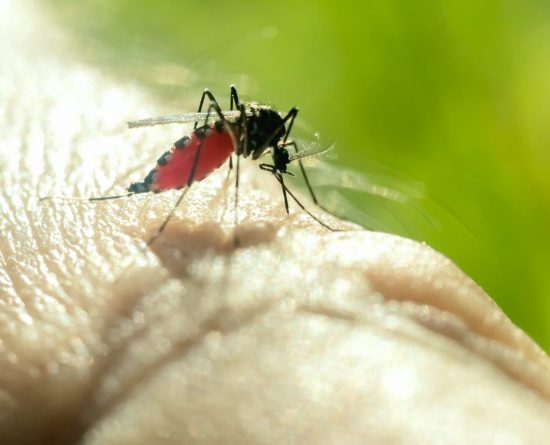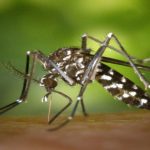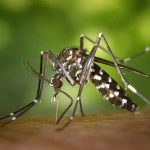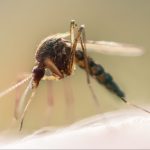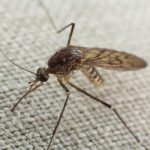Is mosquitos invertebrates?
Most animal species on earth are insects, which are a subclass of invertebrate creatures. They consist of creatures like bees, cockroaches, butterflies, flies, mosquitoes, and ants. They are a wildly successful group.
In terms of species diversity, invertebrate creatures outnumber vertebrate ones by a wide margin. Nearly 80% of all animal species are found in one group of invertebrates called Arthropods, which also includes insects, spiders, and crustaceans. Between 12 and 15 percent of all animal species are the remaining invertebrates.
Between 645 and 540 million years ago, single-celled creatures resembling some sponge cells gave rise to the first invertebrates. Since then, they have expanded into practically every ecosystem on Earth, diversified, and developed into some quite advanced species. The variety of strategies used by invertebrates to reproduce, get food, and survive is demonstrated by the enormous diversity of invertebrates that currently inhabit the planet.
Does a mosquito have a backbone?
Why do female mosquitoes ingest blood from humans? They require it for their bodies to produce eggs. Children will learn a lot of amazing facts as they investigate the fascinating world of the blood-sucking animals, and this is just one of them.
Emerging readers will be engaged as they learn about the natural environment, physical attributes, nutrition, and behavior of this unusual invertebrate via the use of large, eye-catching photographs and simple, grade-appropriate text. The World of Invertebrates is a series by Bear ports No Backbone! That includes Blood-Thirsty Mosquitoes.
Are any bugs in vertebrates?
The largest animals to have ever evolved on Earth are vertebrates. We are aware of large dinosaurs, enormous amphibians, enormous moans, enormous sloths, and the enormous blue whale. The palm can fit the largest terrestrial arthropods in comparison. The long-extinct aquatic arthropod Pterygotus fit the description of a giant because of its length, which was close to 10 feet (three meters).
Even a common insect like a grasshopper can appear horrifyingly weird up close. The monster can’t think or feel, as evidenced by its emotionless eyes. With its patterned armor plate, it seems more like a machine than an animal. Too many of the legs are joined in too many different locations. The antennae move, the abdomen beats, and the minuscule oral appendages move food to the mouth. When one learns in a little bit, the creature rushes almost into their face before veering off on crackling wings.
Are insects a type of invertebrates?
The majority of invertebrates have three body components, six legs, and two antennae, but insects have the most. Not all birds have wings. An invertebrate is unquestionably an insect if it has wings, though. Butterflies, beetles, bees, and stick insects are a few typical examples of insects.
Are Mosquitoes Considered Parasites or Predators?
Mosquitoes: parasites or predators?? Mosquitoes are commonly regarded as parasites due to their feeding habits. The female mosquito feeds on the blood of mammals, including humans, to obtain nutrients necessary for egg production. However, they also exhibit predatory behavior in their larval stage, as they feed on other organisms in water bodies. So, one could say that mosquitoes function as both parasites and predators.
How Many Mosquito Species Are There In Australia?
More than 300 mosquito species have been found in Australia, and over 100 of them are capable of spreading illnesses to wild animals and household pets. These species’ eating habits vary greatly; some have been observed to have host-specific feeding habits, while others show more generalized feeding tendencies.
Both of these feeding preferences can be crucial bridging vectors. Individual feeding habits are frequently influenced by host availability and abundance, both of which are strongly correlated with the uniqueness of the habitat. These factors might vary annually and periodically depending on the biology and ecology of certain host species.
Various taxonomic groups, including Carnivore (such as cats, dogs, and foxes), Aves (birds), Diprotodontia (such as possums and macro pods), Artiodactyl (such as cattle, sheep, pigs, and goats), and Equipage (such as horses), have been identified as vertebrate blood-meal hosts to date. Individual vector species exhibit a trade-off between host choice and host availability.
For instance, cattle dominated the blood meal sources of Culex annulirostris in rural Queensland, Australia but birds, rodents, and rabbits predominated in Sydney, a highly urbanized city. Therefore, complicated interactions among vector species, host availability, and host preference—which may be a result of habitat or climate—can influence the ecologies of Australian mosquito-borne viruses. Pathogens will eventually spread as a result of this.

